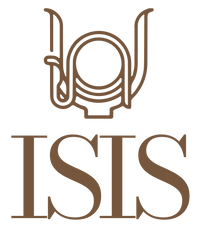The benefits of welcome breastfeeding
The welcome feed, or welcome feed, should take place within two hours of birth. The baby is placed skin to skin against his mother, and will instinctively look for the breast, attracted by the smell (similar to that of amniotic fluid) and the color of the nipple which took on a darker color during pregnancy for this purpose . [7,8,9]
As part of a welcome feeding, the newborn benefits from colostrum and its benefits. This practice promotes the good adaptation of the newborn, (maintenance of body temperature and blood sugar). The newborn receives colostrum and antibodies (especially class A immunoglobins ( IgA ), which locally play a crucial role in the protection against pathogenic microorganisms); the digestive system is stimulated, which facilitates the elimination of meconium and reduces the risk of jaundice. [1,2]
However, the other benefits of breastfeeding, for example, the reduction of obesity, allergies and ENT infections, are not present after a single welcome feed. [3,4] Similarly, the effect is less on digestive stimulation and immunity following a single feeding compared to longer breastfeeding. [5]
In the mother, especially if it occurs in the first two hours after birth, the reception feeding will allow a reduction in the risk of haemorrhage. Indeed, the sucking of the child during feeding stimulates the production of oxytocin: this will cause the acceleration of uterine contractions at the time of feeding (trenches), which will promote a better regression of the size of the uterus and a decrease in the amount of blood loss (lochia) [6]
The sensory stimuli during the welcome feeding will allow a moment of awakening during which the baby is alert. The search for visual contacts but also the vocal responses to the sound of the maternal voice, are triggers of innate attachment behaviors in the newborn. Early mother-baby interactions contribute to the creation of a quality bond of attachment.
[1] Bo Lönnerdal Infant formula and infant nutrition: bioactive proteins of human milk and implications for composition of infant formulas American Society for Nutrition 2014 pages 113 – 119.
[2] Jost T, et Al. Stability of the maternal gut microbiota during late pregnancy and early lactation. Curr Microbiol. 2014 issue; 6 pages: 419–427.
[3] Kull I, Breast feeding and allergic diseases in infants-a prospective birth cohort study. Arch Say Child. 2002 Dec;87 pp:478–481.
33. d. Sizun et Al. Breastfeeding... Spiral. 2003; number 27 pages: 179 – 181
[4] Langhendries J, et Al. Acquisition of neonatal intestinal flora: role on morbidity and therapeutic perspectives. Archives of Pediatrics. 1998 Jun; number 6 pages:644–653.
[5] Langhendries J, et Al. Acquisition of neonatal intestinal flora: role on morbidity and therapeutic perspectives. Archives of Pediatrics. 1998 Jun; number 6 pages:644–653.
[6] Wen L, et Al. The impact of breastfeeding on postpartum pain after vaginal and cesarean delivery. J Clin Anesth. 2015 Feb;27: pages 33–38.
[7] Marlier L, Schaal B, Soussignan R. Neonatal responsiveness to the odor of amniotic and lacteal fluids: a test of perinatal chemosensory continuity, Child Dev 1998; 69(3): 611-623.
[8] Doucet S, Soussignan R, Sagot P, Schaal B. The Secretion of Areolar (Montgomery's) Glands from Lactating Women Elicits Selective, Unconditional Responses in Neonates, PLoS ONE 2009 ; 4(10):e7579.
[9] Doucet S, Soussignan R, Sagot P, Schaal B. The 'smellscape' of mother's breast effects of odor masking and selective unmasking on neonatal arousal, oral and visual responses, Developmental Psychobiology 2007 ; 49: 129-38.




Leave a comment